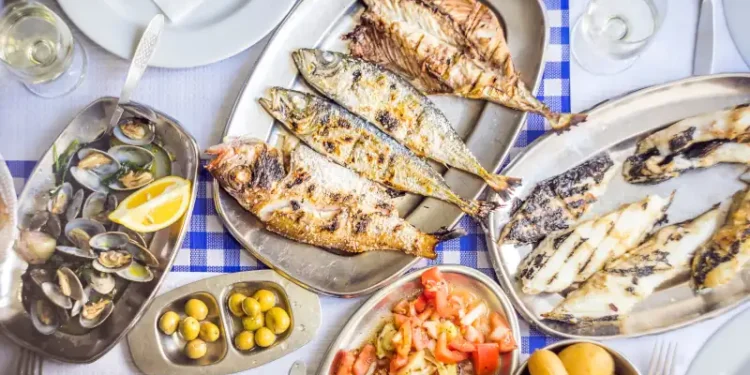Restaurants across Portugal announce their menu do dia, or daily menu. It doesn’t matter if you’re in the north or the south, in a city or a village—you’re bound to come across a menu of the day.
But what is exactly it, and what does it include?
Typically, a menu do dia consists of a fixed-price lunch menu that includes several courses. Think of them as the Portuguese equivalent of the daily special. In many cases, restaurants and cafés cater to a mostly fixed clientele with their menu do dia.
They choose their main dishes based on what their regular customers prefer. This is especially true in office-heavy neighborhoods.
The makeup of a menu do dia will vary from restaurant to restaurant, but for the most part, it consists of a starter, a main course, and a dessert or a drink (or an espresso).
Here’s what you can expect for each course…
Starter
Usually a soup, which in 95% of the cases will be a vegetable soup. Sometimes, a bread roll or slices of bread are included. Salads can also be found as starters, but not as often.
Main Course
This usually includes a choice of meat or fish with a side of rice, potatoes, or a salad. Vegetarian options are more common in urban areas. The offer will depend on the restaurants and their usual clientele, as well as the season.
In spring, for example, as soon as fava beans appear on the markets, you can expect to see them on daily menus as well. In June, it’s hard not to see a menu do dia that includes grilled sardines or mackerel. Common options are chicken, pork, cod, and salmon.
The side salad is usually quite simple (symbolic, some would say), but that’s because the Portuguese tend to eat a good portion of their vegetables in the form of soup.
In the case of meat dishes, don’t be surprised if they include both potatoes and rice on the side.
Join us January 8. for our annual global index reveal.
Dessert
If the menu do dia includes a dessert, it will probably be either a traditional Portuguese dessert or fruit. Common options include leite creme (Portuguese crème brulée; before serving, the waiter will ask you if you want the burnt sugar layer on top), pudim (pudding, as in flan pudding), arroz doce (rice pudding, served with powdered cinnamon on top), and maçã assada (baked apple, traditionally oven baked with cinnamon and red wine sauce).
Beverage
This will usually be a bottle of water, a small carafe of house wine, or a soft drink.
Prices
The price of a menu do dia will depend not just on the food offered but also on the location and type of restaurant. On average, you can expect to pay €10. In touristy areas or upscale restaurants, prices will usually stay in the €15 to €20 range. In some areas, you can also find simple menus under 10 euros consisting of soup, main course, and espresso.
Going for a menu do dia means having a good, cheap, and reasonably balanced meal delivered fairly quickly and at a modest price. More often than not, it’s also an amazing opportunity to experience authentic local flavors.
Sincerely,
Cátia Lima
Contributor, Europe Uncovered












